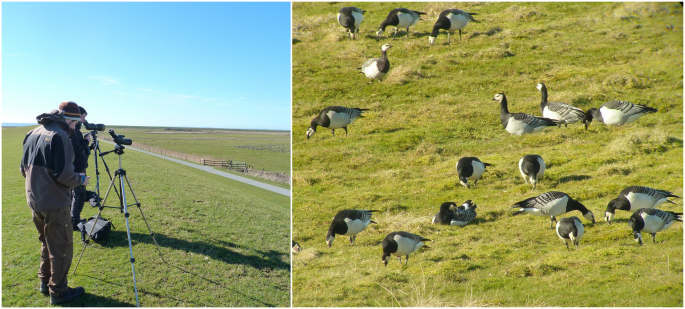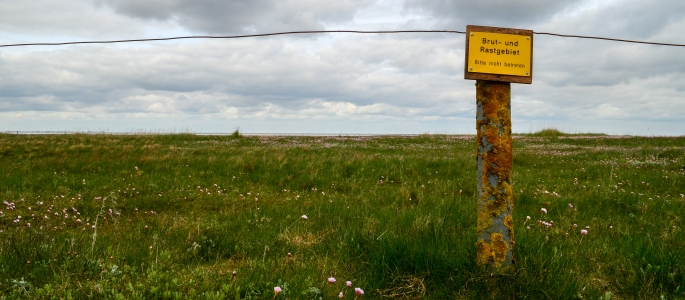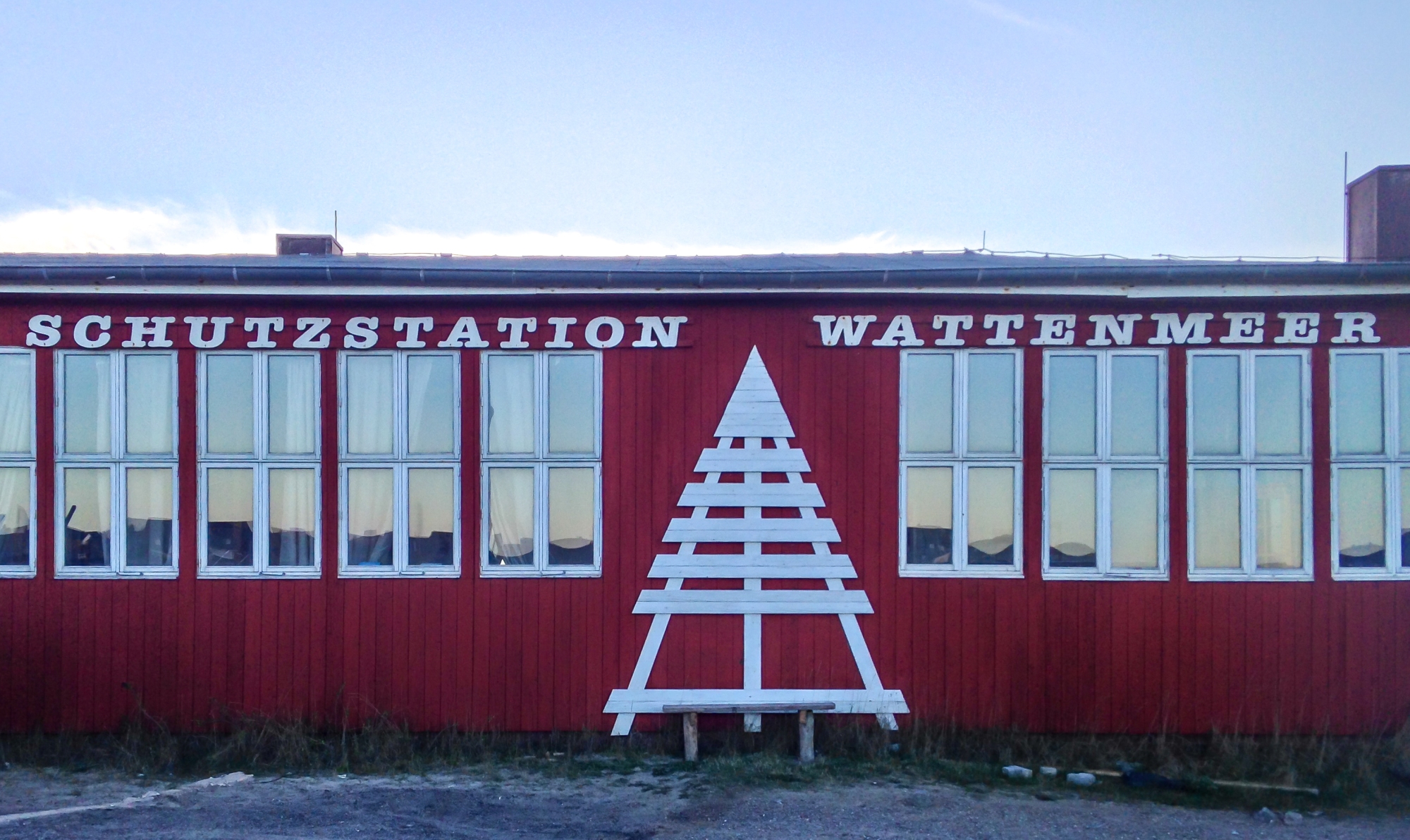Reflecting on my eight month internship on the German island of Sylt brings back a wealth of fond memories. I lived in a wonderful old house just a minute’s walk from a 42km long beach strewn with shells. In my free time I could wander for hours up and down this coast, looking for rarities to add to my growing collection as well as my vocabulary. When not wandering the beach, day-to-day work was kind to me. Most of my tasks were enjoyable, from repairing bicycles to maintaining aquariums. A few of are worth highlighting and I thought I’d take the time to explain in a bit more detail…
More often than not, I would do bi-weekly counts of migratory waders and geese. At first I thought this a near-impossible task. It essentially meant counting every bird of interest (waders, ducks and geese) in a given area. I remember my first outing well. I took one look at the gear we were going to use and thought we were off to launch a small army of short-range ballistic missiles: we had sturdy tripods, large heavily-padded spotting scopes, miniature tally counters and sets of binoculars. That first outing we counted roughly 8000 birds along the assigned transect, some 4000 of which were barnacle geese. Little did I know this was a fairly moderate count, and that during peak migration I would be counting 25 000 – 30 000 birds in an hour. While this work could be tedious at times, the data it generates is hugely valuable and is ultimately used to inform policy-shaping research in the area (e.g. this excellent Bioconsult report on bird population trends between 1987-2014). While there is undoubtedly error in and between counts, several techniques exist to improve the quality of your bird counts. If this is something you would like to get better at, take a look at this website to get a grip of the fundamentals. Ultimately it was this bi-weekly work that kindled my interest in bird watching and initiated an understanding of how we can use birds as indicators for greater conservation goals.

Another big component of my work on Sylt was working as a tour guide. I took groups of all backgrounds for tours along the mudflats: fellow conservationists, research groups, school classes, journalists and once even a group of enthusiastic French travel bloggers (whose blogs I have subsequently found on google just by typing “Sylt Mer des Wadden Jacques” – you can view them here, here, here and here). While at first leading a tour group seems a daunting task, it’s something I really came to enjoy over time. It gives you the chance to shape people’s perceptions about nature, to gauge their interest, and hopefully leave them with a feeling of appreciation. This isn’t always possible of course, many school children are far more interested in throwing sand at one another, and the occasional group is only interested in the whacky ways in which everything reproduces. This too can be great fun to explain – take for example the common slipper shell. These strange sea snails are “sequential hermaphrodites”. They form mating piles whereby the largest and oldest animals, at the base of a pile, are female, and the younger and smaller animals at the top are male. If the females in the stack die, the largest of the males will become a female. (More on these fascinating creatures here.)

While bird counts and mudflat tours were my bread and butter, a string of other tasks filled my time. I patrolled and repaired key bird breeding areas around the island, I fished for sand prawns in the shallows (in fact I reckon I developed the world’s most advanced human-powered broomstick-built prawn trawling contraption known to date – which I aptly named the Nimbus 3000), I repaired more bicycles than I care to remember, I built furniture (a set of cupboards, new stools for the exhibition, a specially-cut table to mount a stuffed seal, and two bed frames) albeit probably with more screws than wood, I went to Husum once a week for two months to grind out four hours of German grammar at the local school, and I did a stupendous amount of grocery shopping considering I hardly understood the shopping lists provided!

All things considered, work on the island was good. There was also lots of non-work in between, but that’s perhaps a blog post for another time.
Cover photo: The home base for volunteers working on Sylt known as the ‘Bretterbude’. Photo credit: Laura Czerniewicz
